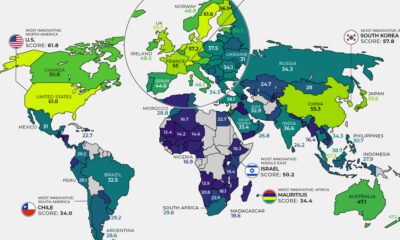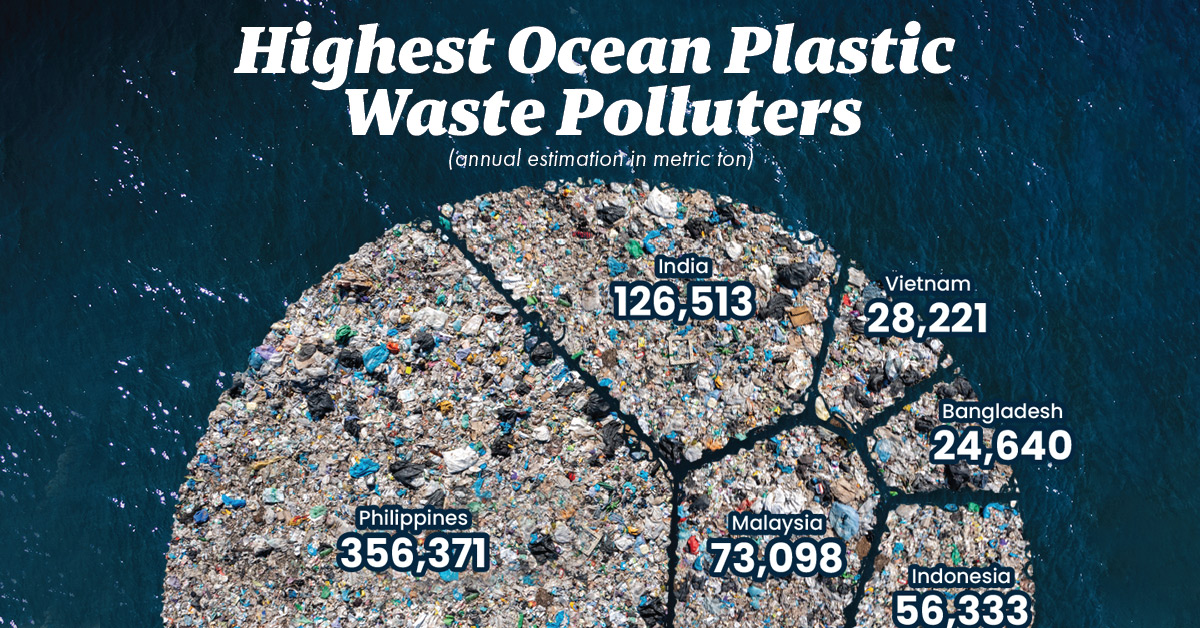However, there remains a good argument that the world’s oceans – and the ships that roam them – often get overlooked when it comes to advances in transportation technology. How will shipping change in the coming years, and what trends can we look to for guidance on the future of shipping?
The Future of Shipping
Today’s infographic comes to us from Futurism, and it gives examples of ships already in production – or in the concept phase – that aim to make activity on the world’s oceans greener and more autonomous.
How does the future of shipping shape up? There are two main trends that emerge from these upcoming ships: an increased use of alternative energy and higher levels of automation.
Greener Ships
Fuel accounts for about half of the operating costs of the shipping industry – so the type of fuel used to move ships between ports is paramount. Since the 1960s, heavy fuel oil (HFO) has been the dominant choice for the industry. It’s cheap and plentiful, but it’s also extremely dirty. Shipping today only produces 3% of carbon dioxide emissions – but it’s areas like sulphur (15% of global total) and particulate emissions (11% of total) that are considered a bigger problem. As a result, the industry is not only moving to use cleaner oil-based fuels – but some companies are aiming to use alternative energy as well. In the ships above, you’ll see the addition of LNG and fuel cells, as well as the use of solar and wind to help power the future of shipping.
More Autonomous Ships
Ships won’t only be powered differently – they will be navigated and steered using artificial intelligence along with the aid of commercial drones. Rolls-Royce is building an autonomous smart ship right now with Google that will monitor its surroundings in intense detail, while making autonomous decisions on the deep seas. – Mikael Mäkinen, President, Rolls-Royce Marine Implementing this technology on the high seas has a longer development cycle than that for autonomous vehicles, but that doesn’t mean the idea is dead in the water. It just means we’ll have to wait a little longer to see the future of shipping in action – and for now, the prospect of viewing all of the world’s ships in real-time will just have to suffice. on In fact, many pieces of ocean plastic waste have come together to create a vortex of plastic waste thrice the size of France in the Pacific Ocean between California and Hawaii. Where does all of this plastic come from? In this graphic, Louis Lugas Wicaksono used data from a research paper by Lourens J.J. Meijer and team to highlight the top 10 countries emitting plastic pollutants in the waters surrounding them.
Plastic’s Ocean Voyage
First, let’s talk about how this plastic waste reaches the oceans in the first place. Most of the plastic waste found in the deep blue waters comes from the litter in parks, beaches, or along the storm drains lining our streets. These bits of plastic waste are carried into our drains, streams, and rivers by wind and rainwater runoff. The rivers then turn into plastic superhighways, transporting the plastic to the oceans. A large additional chunk of ocean plastic comes from damaged fishing nets or ghost nets that are directly discarded into the high seas.
Countries Feeding the Plastic Problem
Some might think that the countries producing or consuming the most plastic are the ones that pollute the oceans the most. But that’s not true. According to the study, countries with a smaller geographical area, longer coastlines, high rainfall, and poor waste management systems are more likely to wash plastics into the sea. For example, China generates 10 times the plastic waste that Malaysia does. However, 9% of Malaysia’s total plastic waste is estimated to reach the ocean, in comparison to China’s 0.6%. The Philippines—an archipelago of over 7,000 islands, with a 36,289 kilometer coastline and 4,820 plastic emitting rivers—is estimated to emit 35% of the ocean’s plastic. In addition to the Philippines, over 75% of the accumulated plastic in the ocean is reported to come from the mismanaged waste in Asian countries including India, Malaysia, China, Indonesia, Myanmar, Vietnam, Bangladesh, and Thailand.
The Path to a Plastic-free Ocean
The first, and most obvious, way to reduce plastic accumulation is to reduce the use of plastic. Lesser production equals lesser waste. The second step is managing the plastic waste generated, and this is where the challenge lies. Many high-income countries generate high amounts of plastic waste, but are either better at processing it or exporting it to other countries. Meanwhile, many of the middle-income and low-income countries that both demand plastics and receive bulk exports have yet to develop the infrastructure needed to process it.














